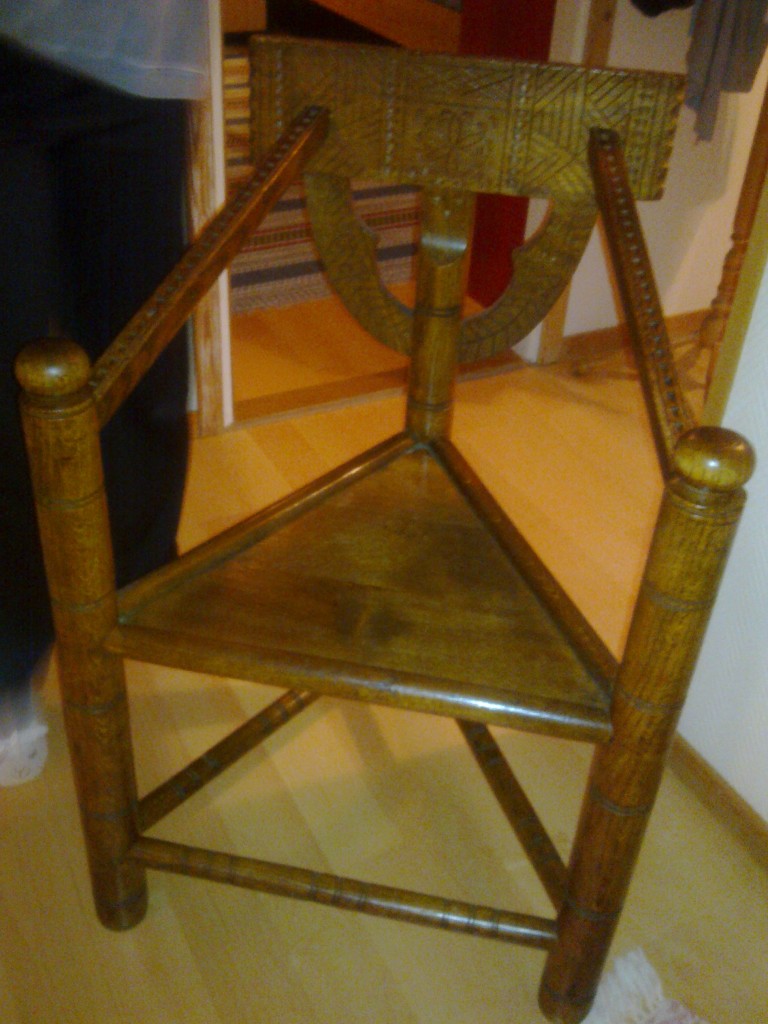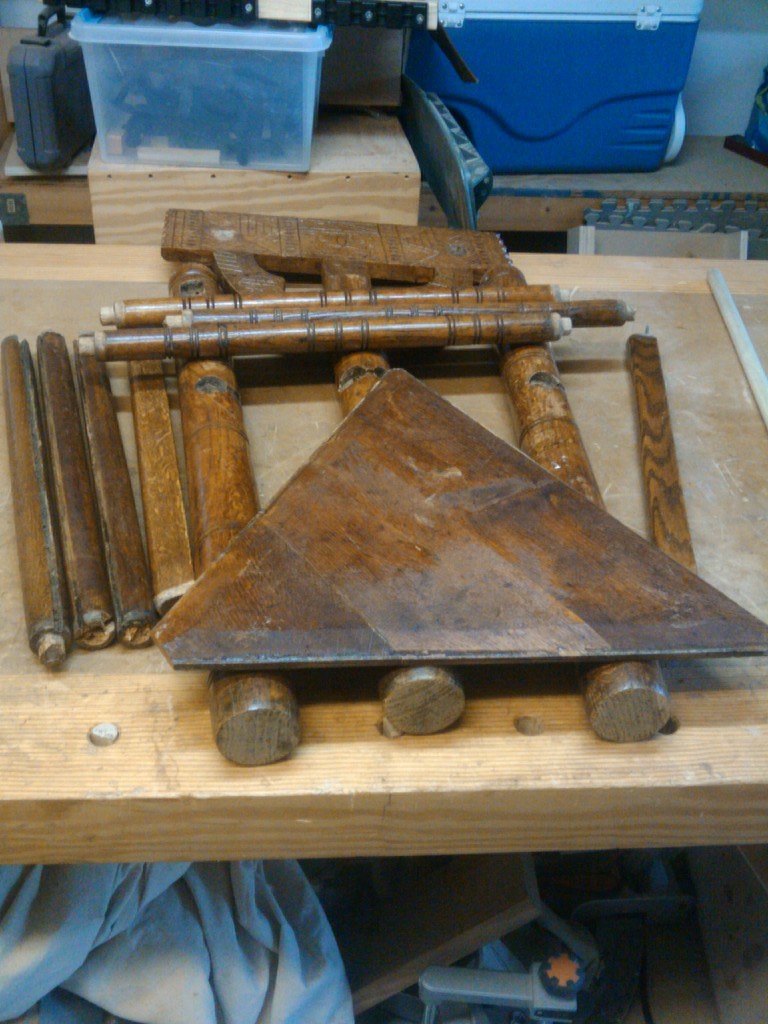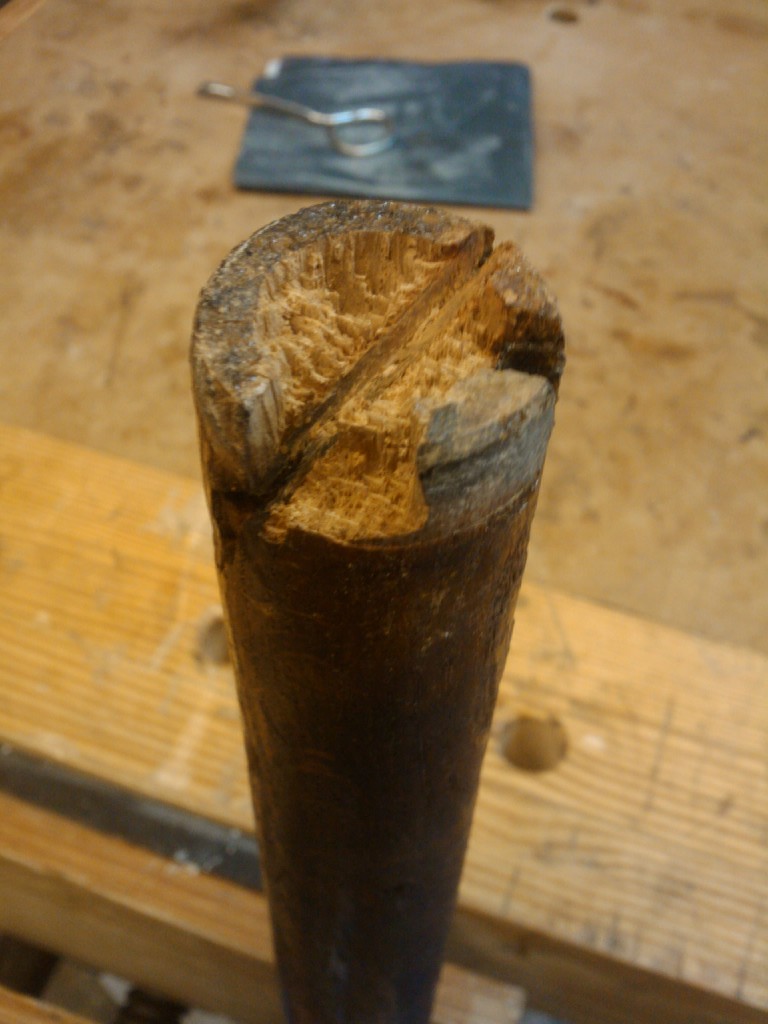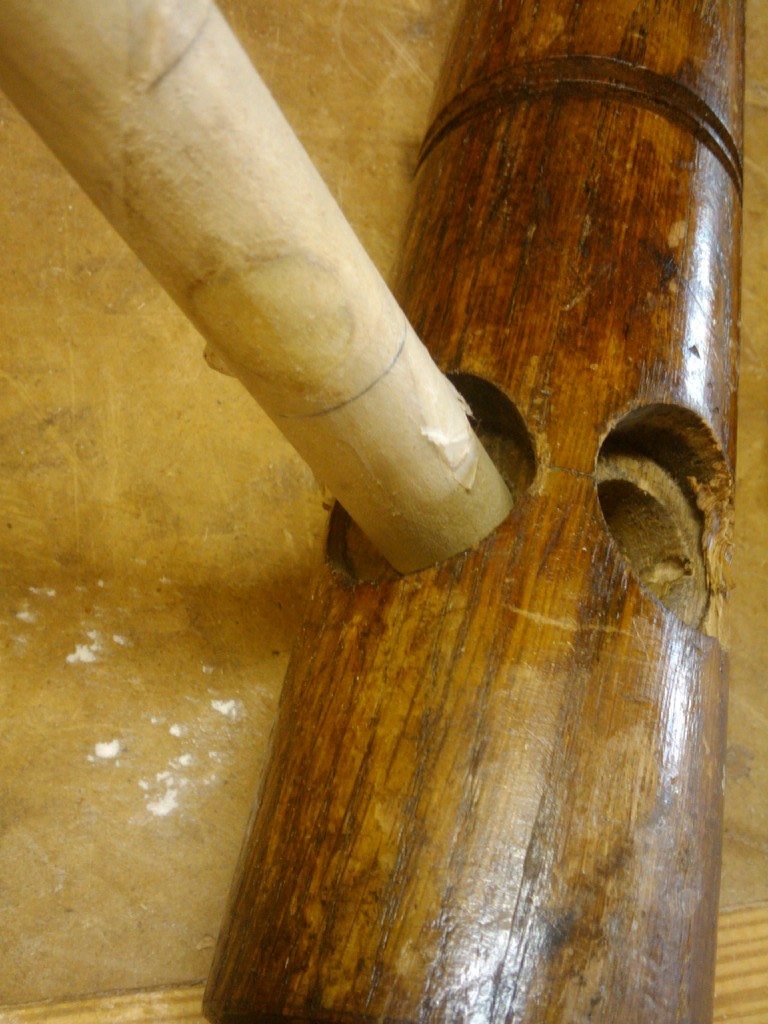I have this really good friend. She lives right down the street from us. Our kids play together. Both families get together for picnics, dinners over and movie nights. Her husband is a Washington Redskins fan, but this New York Giants fan can still allow him into his house.
She also happens to be Swedish. Well, she used to be, but she became an American citizen a few years ago. Anyway, she still has family and friends over in the homeland, and she recently visited her brother to celebrate his 50th birthday. It was a total surprise.
Before she made the return trip to Florida, her brother brought out a family heirloom. A piece of furniture she had always loved. It is a three-legged corner chair known as a Munkstol. What’s a Munkstol? Glad you asked. According to the Swedish Wikipedia and a bad translation from Google Translate:
A monk’s chair is a seating piece of furniture that was particularly popular during National Romanticism. Munk The chair is made of three straight, vertical poles, which constitutes both legs and holds up armrests. Between these there is a horizontal, triangle shaped seat with a tip pointing backwards. Munk chairs are often equipped with hand-woven, thin cushions of wool. They are quite uncomfortable to sit in.
And, as you can see, it’s a pretty sweet looking corner chair. My neighbor told me they were very popular after World War II. The three posts are turned beautifully, the crest rail is very ornately carved. The seat is an elegantly raised panel, with its edges held in a groove in each of the three turned seat stretchers. Quite the interesting looking project.
The only problem? Well, her brother – in a totally kind effort to make it easier to carry back – basically beat the piece apart with a hammer. So, these are the pieces…
Ehhh. This wouldn’t normally be an issue, but part of the plan when things were being busted apart was that my neighbor’s good woodworking friend – you know, the guy who likes to woodwork in the neighborhood – would be more than happy to put things back together…
Gosh, it would have been easier had her brother – in his zeal to pack this baby up – not busted the piece up so roughly that he broke off the tenons on all of the turned seat spindles…
Fortunately, I was able to spend some time cleaning out the broken off tenons from the mortises (And pulling out the incredible number of cut nails that had been driven into the piece to keep the spindles from twisting), so they are ready to have new tenons prepared for them. And, I also discovered that a standard-issue 3/4″ hardwood dowel from the local home improvement center fits into the round mortises perfectly.
Now, I just need to figure out a way to bore a hole into the end grain of the spindles, set the dowels into those spindles with some epoxy, and then epoxy them into the mortises without blowing out the sides of the spindles… This is going to be a real challenge.
The other one is to get the assembly put back together in the proper order. You can see from the finished piece that this is going to be one complicated build to get everything together….
Now, my neighbor’s husband is a professional sushi chef. So, I’m going to be plied with some prime Hawaiian tuna as a repayment for this job. So, with visions of some tasty Japanese treats dancing in my mind, I’m going to have to find the way to do this project soon… So I can enjoy the sushi while admiring the completed, serviceable Monkstol.






You’ll have to keep us posted on this project. I would think restoration would be a great way to really learn furniture construction. Not the way I want to learn, but I’m sure it would be an great education.
I don’t know if it’s your bag, or not, but Bridge City makes a great jig for drilling (I don’t remember the name) where in the promo video they show drilling into end grain on various-sized dowels. Maybe you have a friend that owns one of those jigs…?
The one thing that also sticks in my mind from that is the recommendation to use a “normal” (ie. not brad point, no spurs) drill bit when drilling out the end grain on the dowels. Made for a much cleaner cut.
Good luck with the rebuild; I look forward to reading about it.
Very weird to go to your blog which I visit at least once a week and see a picture of our local opera house where some of my best friends work.
/Swedish reader.
Pretty cool, don’t you think?
I agree. Both that you mentioned it and the house itself. Like everything here in Gothenburg it has to have a maritime theme (sigh) and it’s meant to look like the bow of a ship. From some angles it kinda works.
I saw you worked out the monk chair. Niceley done!
/A
Fantastic to see this chair, because I bought one exactly like it yesterday! I was wondering about it’s origin, do you know where they are from?
Link to picture: https://www.facebook.com/photo.php?fbid=10201875966410960&set=a.1317782314779.47373.1537391087&type=1&theater
Göran N.
It belongs to my neighbor. She was born in Sweden and immigrated to the United States back in the 1980s. She says that it is a Monkstool, a corner chair of Swedish origin. It’s an interesting, if not totally uncomfortable, chair to sit in. Very elegant in its simplicity…
Then they are probably from a monastery here that has imported them from somewhere because it is not a typically Swedish design. Looks more nepalesic, hard to tell, but I am sure they are not Swedish made.
I agree that, though Swedish monk’s stools may have been tri-cornered, these chairs are not originally Swedish. The usual term is Turner’s Chair, the turner being an Elizabethan lathesman, the chair being a bit of intricate virtuosity displayed. [If your last name is Turner, that’s why.] Although one antiques seller claimed theirs—a fairly simple one—was 17th century, I find more credible another’s estimate as Early Victorian, c1840 for the simplified version. The decorative designs are similar from chair to chair, but they do vary. I don’t know enough to place origin for any of them. Even so, I’m pretty sure these were massed produced; here’s a link to a picture identical to my chair posted by some other guy of his chair:
https://www.facebook.com/photo.php?fbid=10213658169031504&set=pb.1322642717.-2207520000.1501991377.&type=3&theater
Washington DC’s Cosmos Club, where the National Geographic Society was founded, also has one like mine in the general mgr’s office. Yours is the only one I’ve seen with pommels on the front posts. On another one, the back was an ogee arch, rather than a rectangle like this one and mine. So far, all I’ve found are solid oak.
I’ve had a virtually identical chair from my grandmother for over 50 years. Most people assume it’s uncomfortable unless they get a chance to sit in it. I sit in mine for hours without fatigue, but then I hate chairs that make you lean back. Google has never turned up anything about it until tonight, when I got 8 hits. Very glad you posted. One final note, I recently saw a Victorian Turner’s Chair sold for $96, shocking to me considering that mid-century modern, formed-plywood side chairs with vinyl seats begin at $500.
Wikipedia has an article about turned chairs here:
https://en.m.wikipedia.org/wiki/Turned_chair